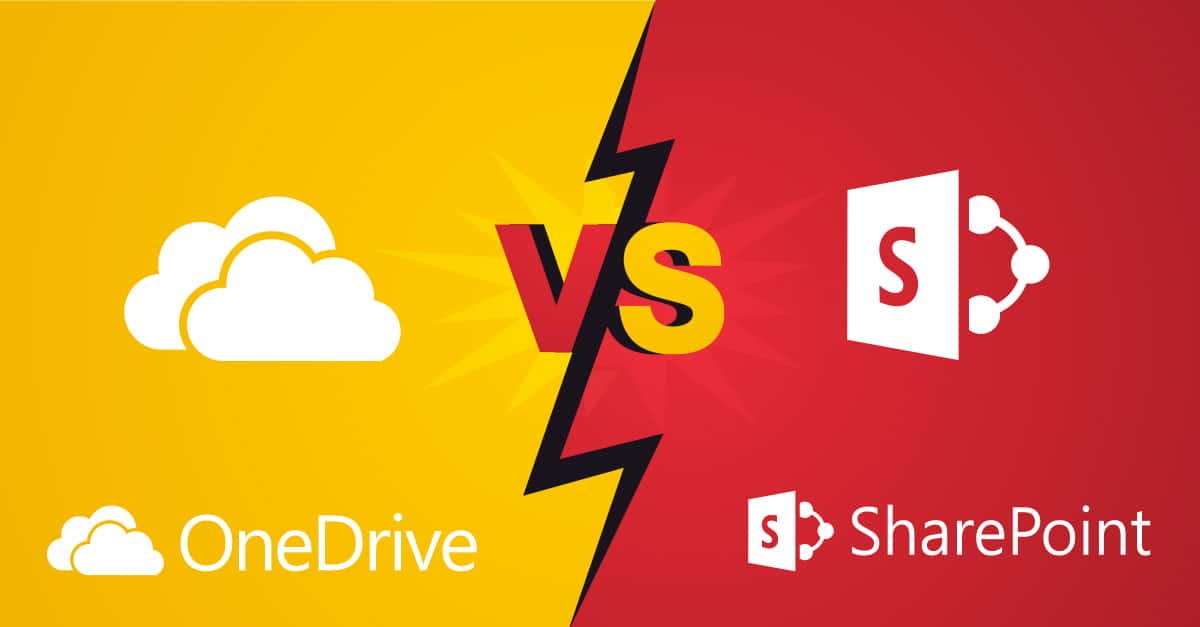
- #Microsoft onedrive for business vs sharepoint archive#
- #Microsoft onedrive for business vs sharepoint full#
- #Microsoft onedrive for business vs sharepoint download#
- #Microsoft onedrive for business vs sharepoint free#
Still, the vast majority of day-to-day documents are going to be okay, and with 1 TB of storage per user (or per site collection in SharePoint), many small businesses will find this plenty adequate for their needs.
#Microsoft onedrive for business vs sharepoint archive#
* Note: you still shouldn’t be syncing Access database files (or any database files for that matter), or PST / archive files from Outlook. Oh, and if you are looking for a way to accomplish this with Group Policy, here it is. Happy to report that my testing over the past couple of months has been nothing but positive. I have been asking for this feature since 2014. The result is, your Libraries will sync under your Organization’s name in File Explorer, similar to how your personal files sync using the OneDrive app.įinally! We have a workable solution for replacing the traditional file server experience, with something intuitive that plugs into the same old familiar File explorer. Then, add your SharePoint libraries by visiting them in a web browser, and clicking on Sync. Just follow prompts to allow OneDrive to open and do it’s magic.
#Microsoft onedrive for business vs sharepoint download#
Choose Settings.įrom the Settings tab, under Files On-Demand, choose the check mark box for Save space and download files as you use them. To enable this selective syncing on your OneDrive client, right-click the OneDrive icon in the system tray (by the clock).
#Microsoft onedrive for business vs sharepoint free#
See screenshot below:įurthermore, you can toggle which ones are synced or not, by right-clicking and choosing either Always keep on this device (sync) or Free up space (cloud). Those which are still in the cloud will display a blue cloud icon, whereas synced files will be indicated with a green icon. So it still wasn’t great, unless you were willing to sync everything (a terrible idea).īut now, with the new “Files On-Demand” feature, everything seems to be working seamlessly: you can see all the files and folders in the library, including those which are not synced to the local computer. You could choose individual files & folders to sync, leaving others in the cloud (but then you couldn’t see them, without going to the web). At some point in the development process, you could even sync SharePoint libraries to your workstation using the OneDrive app, but it was annoying, and often didn’t work well. Office 365 has been improving their offerings little by little. File explorer has long been the “home” of our files.
#Microsoft onedrive for business vs sharepoint full#
Just give me a full view from File explorer, similar to my old mapped drives… why is Microsoft such a Charlie Foxtrot?!! I believe the official results were: 99 percent reported absolutely hating it, the remaining 1 percent said it was “fine” and that they “could probably learn to live with it.”

Most often, you would have been accessing your SharePoint files via web browser, and not everyone liked that…. The problem with SharePoint, however, is that it is not a 1-for-1 experience shift compared with the traditional on-premises file server, when it comes to “company-wide” shares. OneDrive has been great for personal files for a long time–I usually recommend clients start by replacing redirected “Documents” folders with OneDrive for Business. You’ll just want to enable Files On-Demand first.* Availability of mobile apps varies by country/region.The real answer to this question is: it depends.

For HD calling, compatible HD hardware and broadband connection with at least 4 Mbps required.ĥ. This compatibility with Office does not include the Exchange Online Kiosk or Office 365 F3 plans.ģ. Previous versions of Office, such as Office 2010 and Office 2007, may work with Office 365 Enterprise with reduced functionality. Most plans that do not include the desktop version of Office work with the latest version of Office, Office 2016, Office 2013, and Office 2011 for Mac. Beyond 25 TB, storage is provisioned as 25 TB SharePoint team sites to individual users.Ģ.

Storage up to 25 TB/user is provisioned in OneDrive for Business. Request additional storage by contacting Microsoft support.

Microsoft will initially provide 1 TB/user of OneDrive for Business storage, which admins can increase to 5 TB/user. Unlimited personal cloud storage for qualifying plans for subscriptions of five or more users, otherwise 1 TB/user.


 0 kommentar(er)
0 kommentar(er)
